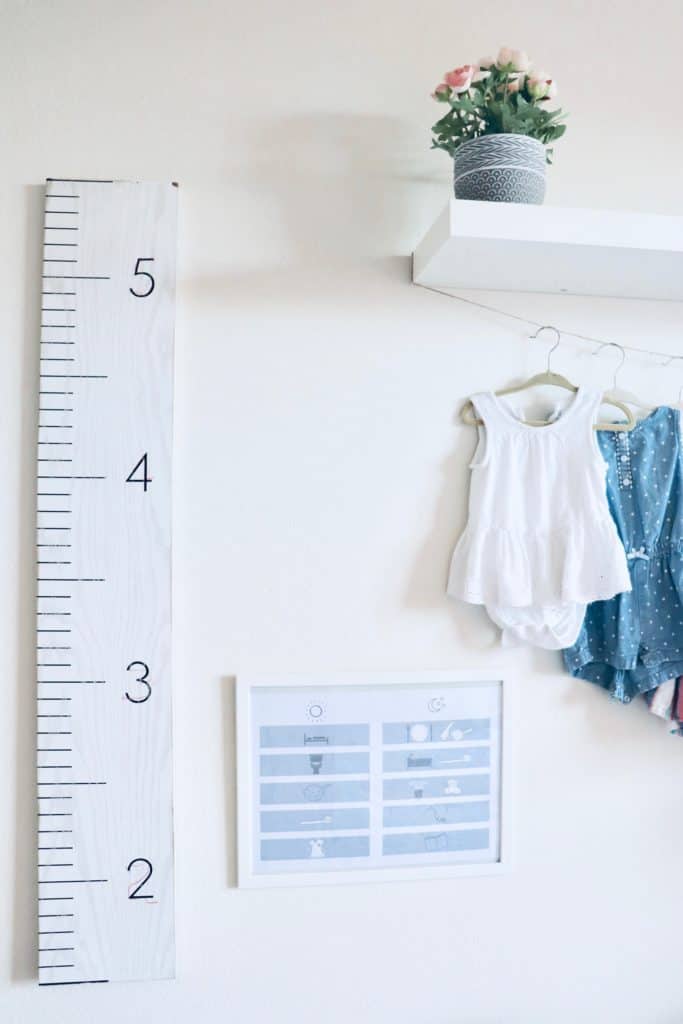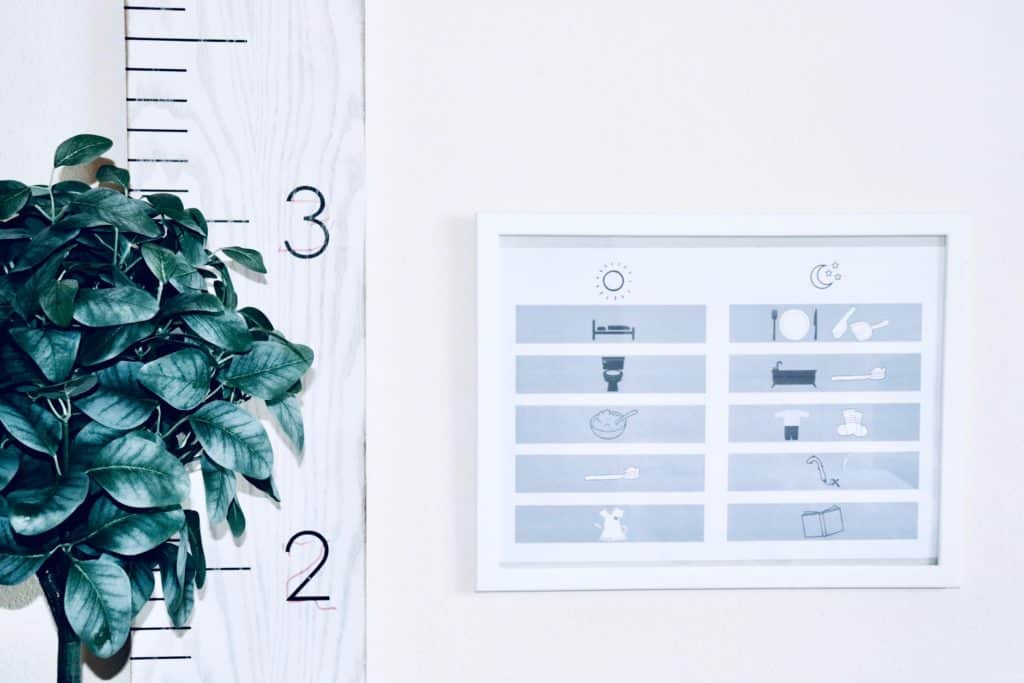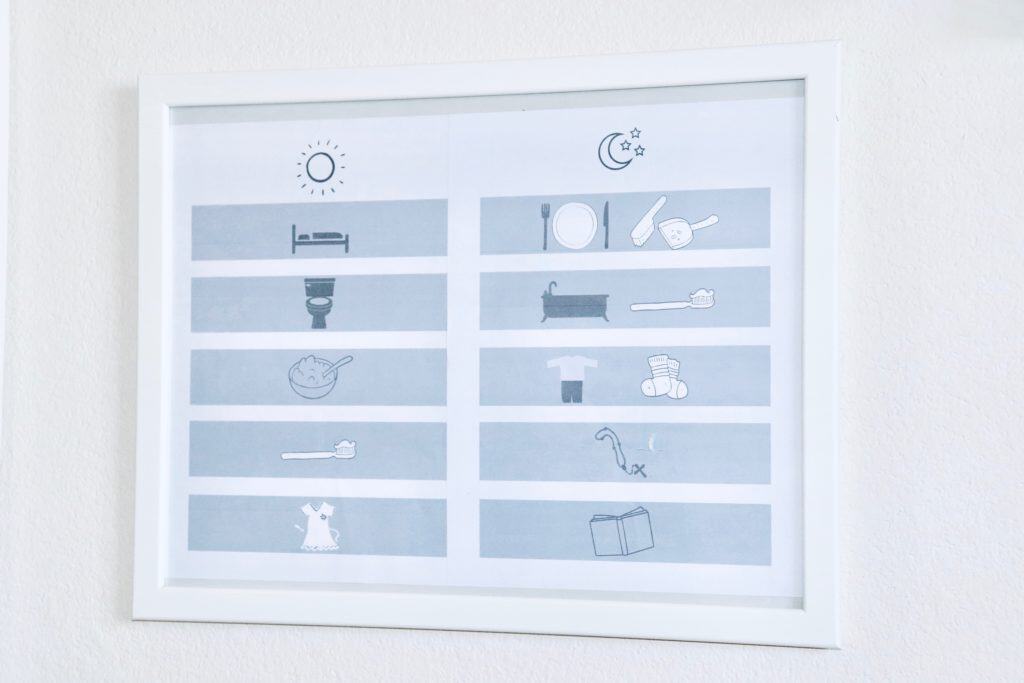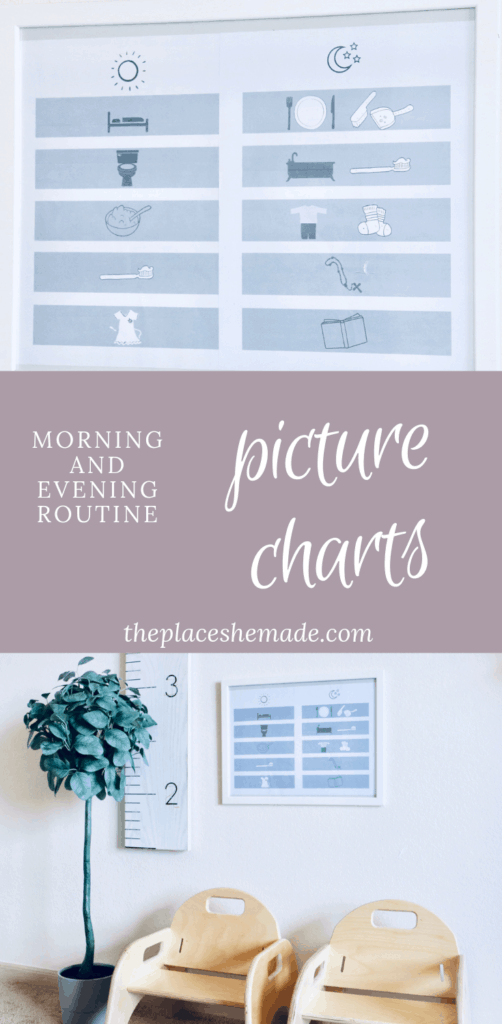
Are you ready to set your child up for smooth morning and evening success? As I’m preparing for the school year to start next week, I wanted to share one of our favorite ways to minimize morning and bedtime stress in our home…
*Picture Routine Charts!* Hooray!
Yes, I hear this cheering in my head, that’s how much I appreciate these things and how they help nudge particularly resistant toddlers to keep moving forward. A yearish ago I made a rough one by hand for our then 3-year old, and it was an amazing little aid in helping her through frustrated feelings related to getting ready tasks. Thankfully, a routine chart is a quick and easy tool to whip up for your little one too!
INTENTION 1: FOR INDEPENDENCE
I’ve briefly mentioned here before the Montessori principle of helping children experience independence as much as possible. Some call it the “help me to help myself” concept. When we have a radical trust in our child’s own process (along with an informed mind regarding their abilities developmentally), it is beautiful to witness what a child does with that space given to learn and grow. It’s true we accompany and support their process, but it is only when we hold back from interrupting and offering (too much) help, can our children have a chance to build self-confidence, a sense of personal agency and inner pride.
I know I personally don’t give my children this opportunity to develop their potential when I rush us through a series of tasks. I tend to want to just quickly do most of it myself because it’s “easier” and more efficient according to the clock. It is challenging for me to be patient in the opportune moments. When I think about it even more, much of my “inability” to allow my girls to practice and experience their own abilities comes down to me not being prepared beforehand. I need to plan for generous amounts of getting ready time, for instance. I need to have their materials ready (like clean laundry available, and a non-empty tube of toothpaste!). I need to have thought through and explained the process on their level. Clear morning and evening routines are a prime example.
INTENTION 2: FOR CONSISTENCY
Another key Montessori concept is having consistency in the environment. Children crave and thrive on order, and frequent routine changes can hinder their learning process. Having the knowledge of what to expect is not only comforting, but it allows the child to enter more deeply into her learning.
Making picture routine charts for our home keeps me from randomly doing things differently every day. If one of us parents presents a particular process in one order and another does it differently, we might see our child get agitated. She may not be eager to participate because of the disorganization. She may assume that she won’t succeed if she doesn’t quite know where things are or what she is supposed to do.
INTENTION 3: FOR PARENTAL SANITY
Well thought out (and simple) routine charts take the pressure off the parent. Do you, like me, hate feeling like the naggy nagger mother? It’s so unpleasant hearing my voice like a broken record saying “please put your shirt on… it’s time to brush your teeth… we need to use the toilet first, what happened to your shirt?” etc. Instead, with our picture charts, we get to refer to the established routine and ask, “what does your chart say comes next?”
HOW TO WHIP THEM UP

1. Sit down and write out what your morning and evening routines look like now.
Is there a particular order you are drawn to? Do you like it? Are there new things you would like to start incorporating ? Is anything unnecessary or not as important that you could leave out?
2. After making your edits, write a first draft of the new routines you’d like to adopt.
It can just be on a legal pad or piece of computer paper!
3. Try out guiding your children through this written routine (verbally) for several days to a week.
See how it went… does the order make sense? Were there any difficulties you could brainstorm a solution for? Edit your changes.
4. Make your charts!
My drawing skills aren’t the best (i.e., my four-year-old: “Mama, what is this a picture of? Really? It doesn’t really look like that at all”). This time around, I turned to canva.com to make some simple ones.
*If drawing or making your own on the computer does not excite you, you are welcome to print mine or use a blank template by going HERE. If you choose the blank template, you can simply copy and paste some free clipart into a Word document, print, cut and finally glue the pictures to the chart.*
5. Consider “extras.”
Some families like to have their charts laminated and allow their children to make a check mark or large “X” over completed tasks with a dry-erase marker. I’ve heard of others using magnets on a fridge or clothespins clipped along the side to have their children move over the item to the opposite side when they complete them.
6. Place your charts in a communal space and at a visible height for your child.
Choose a spot where the routines are accessible to everyone for reference.
7. Present the routine and charts to your family.
Perhaps the night before you can bring the child(ren) to where the new charts are located and say something like, “I made something lovely for us, this one is to guide us through getting ready in the morning for the day, and this other one is to help us during bedtime. Let me show you how it works and tomorrow we can try it out together.”
8. Make sure both parents are on board!
If you didn’t consult with your spouse initially, (which probably is a good idea, now that I’m thinking of it!), make sure you go over the charts with him and share your vision for how you’re hoping you’d both use them. Remembering consistency is so helpful for the child.
9. Give the routines at least a couple weeks to take root.
Perhaps some small details are bothering you after several days to weeks and you decide it’s worth it to make a small tweak or two to your routine. No biggie, just be sure to explain the changes to the child)(ren). For example, “I noticed that we may like it better to do this part of our routine after this other part. Let’s try out together today and see how we like it!”

GO FOR IT
Get your free picture chart templates and other great home resources by going HERE. Let me know if you try them out and how it goes! Tag me @theplaceshemade on instagram with pictures of your own charts, I’d love to see them. Also share any of your other routine chart tips for us in the comments below.
Happy Placemaking! Love, Serra Ann
PIN IT FOR LATER

Leave a Reply